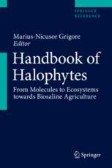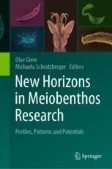Search
Search Results
-
Fish-Birds at Home in Their Oceanic Habitats
Penguin distribution, like that of other seabirds, is not random but is closely related to water types/masses, ocean climate, and food availability....
-
Perennial Forage Grass Production on the Marginal Arabian Peninsula Land
Increasing water scarcity and soil salinization call for more diversified agricultural production systems that have the potential to sustain in...
-
Determination of heat stress zone for daily milk yield using carryover heat effect model in Murrah buffaloes
The objective of the present study was to determine heat stress zones (HSZ) in a year for daily milk yield (DMY) of Murrah buffaloes. Data for the...

-
Biodiversity of Halophytes of the Arctic Zone: Circumpolar
Arctic coast of Russia taxonomy Coastal ecosystems (coastal wetlands) of Arctic seas are tracts of the Earth’s surface showing a maximum diversity...
-
Impact of meltwater flow intensity on the spatiotemporal heterogeneity of microbial mats in the McMurdo Dry Valleys, Antarctica
The meltwater streams of the McMurdo Dry Valleys are hot spots of biological diversity in the climate-sensitive polar desert landscape. Microbial...

-
Introgression at the emerging secondary contact zone of magpie Pica pica subspecies (Aves: Corvidae): integrating data on nuclear and mitochondrial markers, vocalizations, and field observations
Zones of secondary contact provide a good opportunity to investigate the origin and dynamics of reproductive isolation between related populations....

-
Sea Surface Temperature and Ice Concentration Analysis Based on the NOAA Long-Term Satellite and Sea-Truth Data in the Atlantic Antarctic
In our research, we used the NOAA long-term satellite and sea-truth data to study sea ice concentration (SIC) and sea surface temperature (SST) in...
-
Antarctic minke whales find ice gaps along the ice edge in foraging grounds of the Indo-Pacific sector (60° E and 140° E) of the Southern Ocean
Antarctic minke whales Balaenoptera bonaerensis are rorquals that migrate to Antarctic waters to forage during the austral summer. Because the...

-
Exploring Seaweed-Associated Marine Microbes: Growth Impacts and Enzymatic Potential for Sustainable Resource Utilization
Seaweed, a valuable marine resource widely cultivated worldwide, can be vulnerable to stress and microbiome alterations, resulting in the decay of...

-
Polar Meiofauna—Antipoles or Parallels?
At opposite ends of our world lie the poles. In the North, the Arctic, an ocean surrounded by coasts; in the South, the Antarctic continent...
-
Representativeness Assessment and Identification of Priorities for the Protection of Terrestrial Ecosystems in Chilean Patagonia
Protected area systems are the primary tool to guarantee the conservation of biodiversity and the multiple ecosystem services vital for human...
-
Alien Diatom Species of the Autumn Phytoplankton in the Caspian Sea: Their Role in the Formation of the Total Biomass and the Distribution along the Salinity Gradient
AbstractThe phytoplankton structure of ecologically diverse areas of the sea and the role of marine alien species in a formation of the quantitative...

-
Habitat Utilization and Behavior of Phocid Seals in Relation to Oceanography
Phocids (true seals) occur in oceans across the globe, from the tropics to polar oceans, and a few species have even colonized freshwater systems. As...
-
Progress in Microbial Ecology in Ice-Covered Seas
Sea ice seasonally covers 10% of the earth’s oceans and shapes global ocean chemistry. The unique physical processes associated with sea ice growth...
-
Polar cod in jeopardy under the retreating Arctic sea ice
The Arctic amplification of global warming is causing the Arctic-Atlantic ice edge to retreat at unprecedented rates. Here we show how variability...

-
Large Herbivores
Large herbivores can influence the population dynamicsDynamics of their forage plants. Feeding means a disturbance for the affected plants. Although...
-
The polar night shift: seasonal dynamics and drivers of Arctic Ocean microbiomes revealed by autonomous sampling
The Arctic Ocean features extreme seasonal differences in daylight, temperature, ice cover, and mixed layer depth. However, the diversity and ecology...

-
Complex phylogeographic patterns in the intertidal goby Chaenogobius annularis around Kyushu Island as a boundary zone of three different seas
Paleoenvironmental changes in marginal seas on the coast of the northwestern Pacific during the Quaternary have caused genetic differentiation and...

-
Fish Assemblage Responses to the Exclusion of Invasive Common Carp (Cyprinus carpio) from a Large Freshwater Coastal Wetland, Delta Marsh, Manitoba
Common carp ( Cyprinus carpio ) is an invasive fish species in North America and around the world. Through their feeding and spawning they contribute...

-
Feasibility and knowledge gaps to modeling circumpolar seabird bycatch in the Arctic
Alteration and diminution in sea ice cover in the Arctic region will give rise to an intensification and expansion of fishing activities in the...
